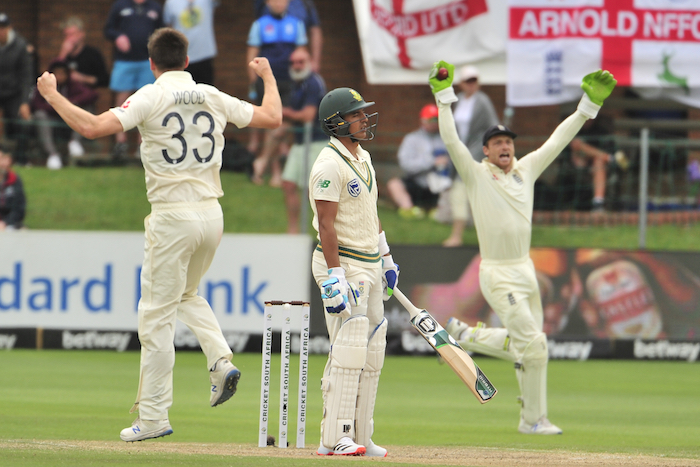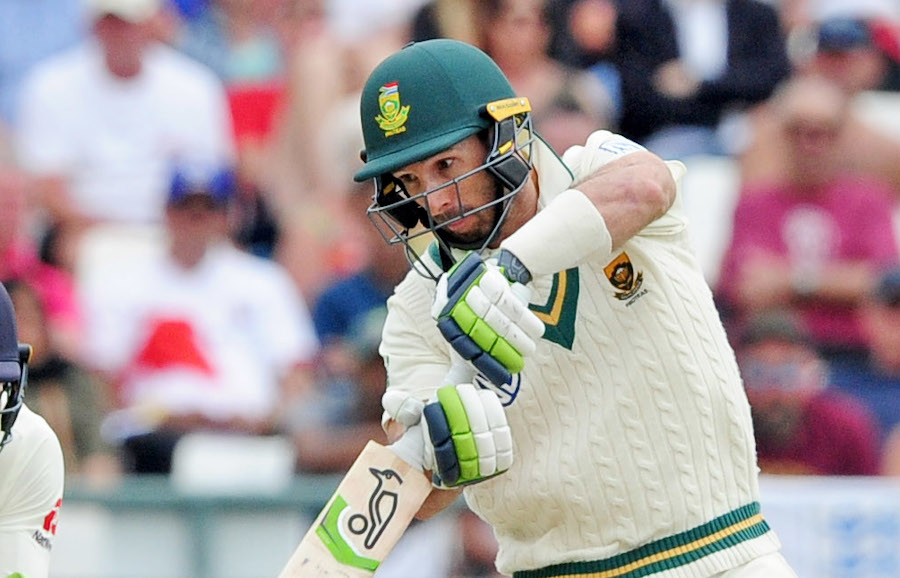Success doesn’t come overnight. By the same token, neither does failure. Six years ago the Proteas were the No 1-ranked Test team in the world. Now they are a long way off the ‘Big Three’. It’s the delayed effects of Kolpak and the player drain.
Denialists will argue that a South African-based Test XI would beat a SA Kolpak XI. That’s not the point. The denialists will also argue that the retirement of the likes of Graeme Smith, Jacques Kallis, Hashim Amla, Morne Morkel, Dale Steyn and now Vernon Philander, would cripple any team. Which is true.
And yet, that in itself supports my view. Which is that Kolpak has hurt the state of South African first-class cricket to the extent that the depth of the local four-day game, the feeder to the Test arena, is not as strong as people would believe it is.
Yes, the Proteas should remain competitive at T20 and ODI level. After all, the shorter the format, the more chance of an upset.

Switch the argument to rugby, for a moment. Without their overseas-based players to call on, the Springboks would not be world champions. If the domestic game was so strong, a South African team would be winning the Super Rugby title most years. The last time it happened was 10 years ago, in 2010. But, ‘Kolpak’ doesn’t apply to rugby. Imagine if it did. Imagine if cricketers could play the first-class format overseas and still be picked for South Africa?
READ: Proteas sink to series defeat
In losing the latest series 3-1 to England, the Proteas lost for the eighth time in their last nine Tests. In those defeats they have been given seven hidings – three times by an innings, once by 200-plus runs, twice by 150-plus runs and once by eight wickets.
Many reckon that without Kolpak, we wouldn’t have the likes of Dane Paterson, Keegan Petersen, Zubayr Hamza and Beuran Hendricks being selected at Test level, because the system would be ‘clogged’ by the veteran player who hasn’t made way for younger talent.
It’s a chicken-and-egg situation. The loss of bowlers to Kolpak such as Hardus Viljoen, Duane Olivier, Kyle Abbott, Marchant de Lange, Wayne Parnell, Morkel and Simon Harmer have meant that there isn’t much international experience in the domestic first-class system. Which means the batsmen are able to feast on bowlers who are not going to challenge one for extended periods. And vice versa with the bowlers.

Then, when those batsmen get to Test level, they find life tough against the top sides and any form of quality spin.
Against England, the Proteas scored 284, 272, 223, 248, 209, 237, 183 and 274. Before that they totalled 431, 191, 275, 189, 162 and 133 against India. Before that, against Sri Lanka at home, they managed 235, 259, 222 and 128. That’s one innings total above 300 and six below 200. Everyone blames the batsmen for South Africa’s ongoing woes. But, it’s a team game.
It’s not as if the bowlers have been brilliant either. Before Joe Root came to South Africa, under his captaincy England averaged 298 per innings and he’d had a win-loss-draw record of 17-14-4 as captain. By the end of the tour he’d upped it to 20-15-4 and the average England innings for the tour was 322. In Durban last year Sri Lanka beat the Proteas by one wicket, putting on an unbeaten 78 for the 10th wicket in doing so. The bowlers? Steyn, Philander, Rabada, Olivier and Keshav Maharaj.
Sure, Kagiso Rabada was missing at the Wanderers (England were without James Anderson and Jofra Archer for longer periods, though) and Lungi Ngidi will add oomph once he returns to fitness, while Anrich Nortje seems a genuine find. But, as admirable as Beuran Hendricks was – taking 5-64 in England’s second innings at the Wanderers – he also went for 4.12 runs an over and the wickets came when England had gone into ODI mode.
Hamza is a hugely talented 24-year-old, and slung in at No 3 against England, he made 5, 18, 10 and 2. The tourists worked out that the newbie is vulnerable to the rising leg-side ball and they bowled to a catching field on the leg-side. (In fact, they were remarkably successful against a number of Proteas batsmen with a leg-side approach, even with their ‘spinners’, which included a career-best haul for Root).

So, Hamza was dropped for the final Test. Now, how does he work on a weakness exposed only at Test level? No amount of hours against the bowling machine will fix the flaw. It has to be in the heat of first-class action. But, where are the likes of Viljoen, Olivier, Morkel and Abbott to test him? They’ve gone Kolpak. So, Hamza is left to feed off a diet of bowling that he is able to dominate and then with runs under his belt will return to Test action. Like Temba Bavuma – one hundred in 67 Test innings at an average of 30.75. Like Theunis de Bruyn. Rinse and repeat.
Another example: Pieter Malan accumulated over 10,000 first-class runs at an average of 44 and in January was given his chance at Test level against England at the age of 30. Malan returned scores of 5, 84, 18, 12, 15 and 22, facing 530 balls in the process (that’s 88 overs) for those 156 runs. His technique is solid but against a quality Test attack his scoring ability is stunted and with Dean Elgar at the other end the Proteas aren’t going to get off to fliers, which allows the opposition the luxury of building pressure. Graeme Smith and Herschelle Gibbs remain the blueprint for an opening-batting partnership.
There’s a similar ‘brain drain’ among coaches. Local might be lekker, but when experience and young excellence are allowed to go overseas the end result is what we have now.
Photo: Gallo Images







